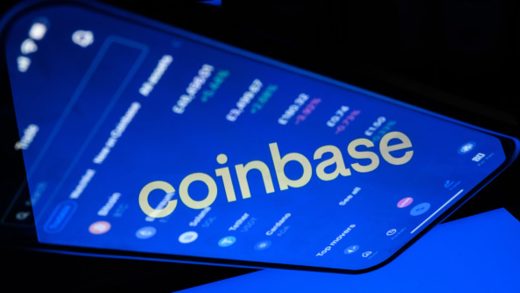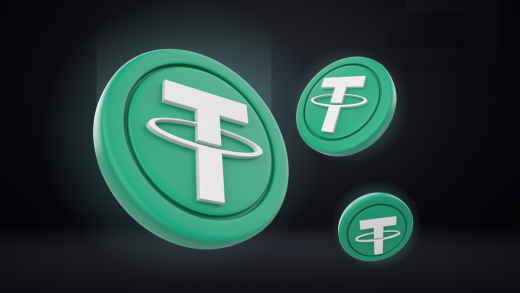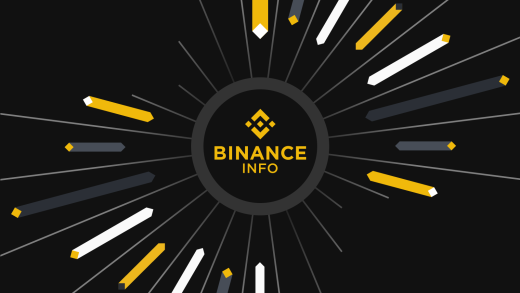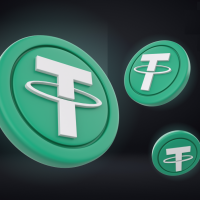Litecoin (LTC) is one of the earliest and most successful cryptocurrencies, often referred to as the “silver to Bitcoin’s gold.” Created in 2011 by Charlie Lee, a former Google engineer, Litecoin was designed to improve upon Bitcoin’s limitations by offering faster transactions and lower fees. Over the years, Litecoin has maintained its position as one of the top cryptocurrencies by market capitalization and is frequently used for everyday transactions due to its speed and cost-effectiveness. This article provides an in-depth look at Litecoin, its underlying technology, the platforms that support it, how it can be sent and received, and the vision behind the project.
What is Litecoin (LTC)?
Litecoin is a decentralized peer-to-peer cryptocurrency that enables instant, near-zero cost payments to anyone in the world. Built on the same codebase as Bitcoin, Litecoin shares many similarities with Bitcoin, but with key differences that enhance its utility as a medium of exchange.
Litecoin was designed to address some of Bitcoin’s limitations, such as slow transaction times and high fees. As a result, Litecoin processes transactions approximately four times faster than Bitcoin and has lower transaction costs, making it ideal for smaller, everyday transactions.
How Litecoin Works
Like Bitcoin, Litecoin operates on a Proof of Work (PoW) consensus mechanism, where miners compete to solve complex cryptographic puzzles to add new blocks to the blockchain. However, Litecoin incorporates several technical differences that distinguish it from Bitcoin:
- Block Time: Litecoin has a block time of 2.5 minutes, compared to Bitcoin’s 10 minutes. This means that Litecoin transactions are confirmed more quickly, making it more suitable for retail and daily use cases.
- Supply: Litecoin has a maximum supply of 84 million coins, which is four times that of Bitcoin’s 21 million coins. This ensures that Litecoin remains scarce but more accessible for smaller transactions.
- Mining Algorithm: Litecoin uses the Scrypt hashing algorithm instead of Bitcoin’s SHA-256. Scrypt is less resource-intensive and more resistant to the specialized hardware (ASICs) that dominate Bitcoin mining, making Litecoin mining more accessible to a wider range of miners.
- Transaction Fees: One of the primary benefits of Litecoin is its low transaction fees, which are often just a fraction of a cent, making it one of the most cost-effective cryptocurrencies for sending money.
- Halving: Like Bitcoin, Litecoin undergoes a halving event approximately every four years. During halving, the block reward for miners is reduced by half, which helps control the supply of new Litecoins and supports its deflationary model.
Key Features of Litecoin
- Faster Transactions: With a block time of 2.5 minutes, Litecoin confirms transactions faster than Bitcoin, which is particularly beneficial for merchants and users looking for quick settlements.
- Lower Fees: Litecoin’s transaction fees are consistently lower than Bitcoin’s, making it ideal for smaller and everyday payments, such as microtransactions or remittances.
- Decentralization: Like Bitcoin, Litecoin operates on a decentralized blockchain that is not controlled by any central authority. Its security and stability are maintained by a global network of miners and nodes.
- Security: Despite its faster transaction times and lower fees, Litecoin maintains the high level of security expected from a PoW blockchain. Transactions on the Litecoin network are secure, immutable, and transparent.
- Wide Adoption: Litecoin has been widely adopted for both consumer and institutional use. It is supported by most cryptocurrency exchanges, wallets, and payment processors, making it easy to use and access.
Use Cases of Litecoin
- Everyday Payments: Litecoin’s fast confirmation times and low fees make it ideal for everyday transactions. Merchants, both online and offline, can accept Litecoin for payments, and users can send LTC to friends or family across the world with ease.
- Remittances: Litecoin’s speed and low cost make it an attractive option for cross-border remittances. Users can send funds to another country in minutes, avoiding the high fees and delays associated with traditional remittance services.
- Micropayments: Due to its low transaction fees, Litecoin is well-suited for micropayments, such as tipping content creators, paying for digital goods, or even making small charitable donations.
- Hedge Against Inflation: Like Bitcoin, Litecoin is often viewed as a store of value and a hedge against inflation. Its capped supply of 84 million coins ensures that LTC retains its scarcity over time.
- Institutional Investment: Litecoin has garnered interest from institutional investors as a digital asset, especially since it has been integrated into several investment products, such as Grayscale Litecoin Trust.
Platforms that Support Litecoin
Litecoin is widely supported by cryptocurrency exchanges, wallets, and financial platforms. Here are some of the top platforms where Litecoin can be bought, sold, and stored:
- Coinbase: One of the most popular cryptocurrency exchanges in the U.S., Coinbase allows users to buy, sell, and hold Litecoin easily.
- Binance: Binance supports LTC trading pairs and offers advanced features for trading Litecoin with other cryptocurrencies and fiat currencies.
- Kraken: Kraken is known for its security and reliability, and it offers a variety of LTC trading pairs and staking services.
- Gemini: A regulated cryptocurrency exchange in the U.S., Gemini provides a secure platform for trading and holding Litecoin.
- PayPal: In recent years, PayPal has integrated Litecoin into its platform, allowing users to buy, sell, and hold LTC alongside Bitcoin, Ethereum, and Bitcoin Cash.
- MetaMask: Though originally an Ethereum-based wallet, MetaMask allows users to store Litecoin through third-party integrations like Binance Smart Chain.
- Trust Wallet: Trust Wallet is a mobile wallet that supports Litecoin alongside a wide variety of other cryptocurrencies.
- Ledger & Trezor: Hardware wallets like Ledger and Trezor provide cold storage solutions for Litecoin, keeping private keys offline and secure from hackers.
Sending and Receiving Litecoin
The process of sending and receiving Litecoin is simple and secure, requiring only a Litecoin wallet. Here’s a step-by-step guide:
- Create a Wallet: To send and receive Litecoin, you’ll need a digital wallet that supports LTC. Popular options include Trust Wallet, Exodus, and hardware wallets like Ledger and Trezor.
- Public Address: Every Litecoin wallet has a unique public address that users share to receive LTC. It’s a long string of alphanumeric characters that acts like a bank account number for cryptocurrencies.
- Send Litecoin: To send Litecoin, you simply enter the recipient’s public address, specify the amount of LTC you want to send, and confirm the transaction. Depending on the network’s congestion, the transaction will be confirmed within a few minutes.
- Transaction Fees: Litecoin’s low transaction fees are a major advantage. Typically, the fee is just a fraction of a cent, making it affordable for both small and large transfers.
- Confirmations: Once the transaction is submitted, it will take a few minutes to receive the necessary confirmations (usually 6 confirmations) on the Litecoin blockchain to ensure the transaction is complete.
Litecoin Trading Pairs
Litecoin can be traded against a wide range of cryptocurrencies and fiat currencies on most major exchanges. Some of the most common trading pairs include:
- LTC/USD: Litecoin is often traded against the U.S. dollar on most major exchanges, providing liquidity for U.S.-based investors.
- LTC/BTC: Litecoin is frequently traded against Bitcoin, allowing investors to diversify between two of the most prominent cryptocurrencies.
- LTC/ETH: Some platforms offer Litecoin-to-Ethereum trading pairs, giving users the ability to move between these two significant altcoins.
- LTC/USDT: Tether (USDT) is a stablecoin commonly used as a base pair for trading against Litecoin due to its stability in value.
- LTC/EUR: Litecoin is also traded against the euro, providing access to European traders.
The Litecoin Project and Future Outlook
Litecoin was designed with simplicity and utility in mind, and it has continued to maintain a solid reputation in the cryptocurrency market. Unlike more complex projects like Ethereum or Cardano, Litecoin remains focused on being an efficient, secure, and cost-effective medium of exchange.
However, Litecoin has continued to evolve. For example, in 2021, Litecoin integrated MimbleWimble via MWEB (MimbleWimble Extension Block), which enhances privacy and fungibility on the network. With MWEB, Litecoin transactions can be more private, ensuring that users can choose to shield their transaction amounts if they wish.
As for the future, Litecoin’s continued role in global finance seems secure. With its widespread adoption, low fees, and fast transactions, it is likely to remain a favorite for retail payments and remittances. Furthermore, its involvement in emerging areas like DeFi (Decentralized Finance) could increase its utility in the cryptocurrency ecosystem.
On The End
Litecoin has proven itself to be a reliable, fast, and low-cost cryptocurrency since its creation in 2011. Often regarded as Bitcoin’s “lighter” version, it offers significant advantages for users looking for quick and affordable transactions. With widespread adoption across platforms, continued development, and unique features like MWEB for privacy, Litecoin remains a prominent player in the cryptocurrency space and is poised to continue evolving with the industry.
Whether you’re a long-term investor or someone looking for a fast and affordable way to send money, Litecoin is worth considering.














1 Response
[…] All information about Litecoin (LTC) […]